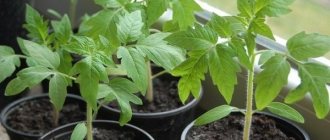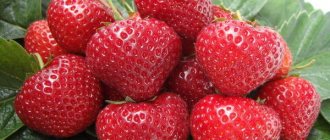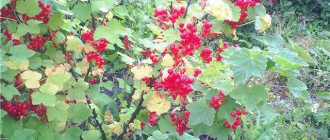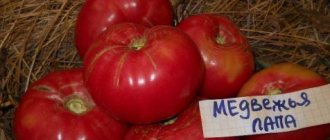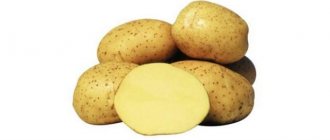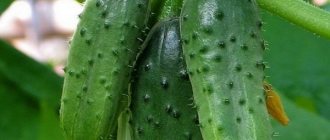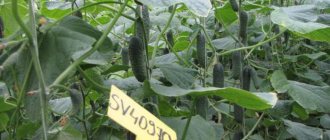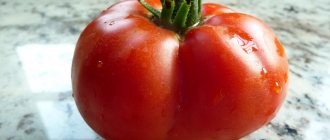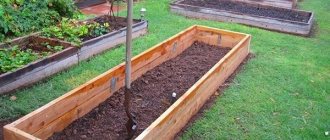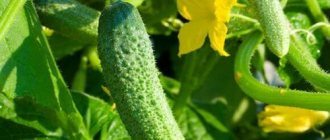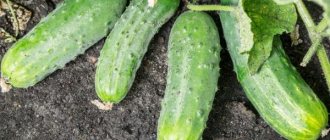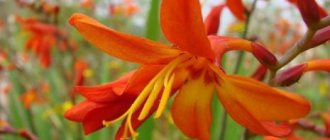Description of the Stanley variety
This is a late variety - you can enjoy the fruits in mid-September. But this is good, since at this time there are no more fruits and vegetables. And sweet plums come in handy. The tree grows small - 3-3.5 m. The crown is semicircular, slightly pyramidal.
The plum tree begins to bear fruit 3-4 years after planting. The plums are of medium size - about 30-40 g. The shape is oval, slightly elongated. The peel is covered with a waxy coating of light blue color. Almost 90% of prunes are made from plums of this variety. Inside the pulp is juicy, soft and sweet. The bone comes off easily.
Description and characteristics of the variety
Description and characteristics of plum include a list of characteristics. Stanley is characterized by high resistance to frost and drought. The variety is grown for industrial purposes and in one's own gardens.
Trunk height and crown branching
The tree is tall, reaches about 3 m. The crown is massive, branched, spherical in shape. The plum has a characteristic dark brown trunk color. The leaves are green, large, pointed at the ends. Peculiar purple spots appear on them, which are often confused with diseases.
Root system dimensions
Stanley roots are powerful and well developed. When growing, they go into the deep layers of the earth. This allows the plum to receive additional moisture through groundwater. Also, thanks to the well-developed root system, basal shoots appear next to the trunk every year. It needs to be removed.
Important! The weight of one plum berry is 50 g, most of which is taken up by the seeds.
Drought and frost resistance
The tree tolerates low temperatures down to -25°C. This is typical for temperate regions. In the north, winter frosts are more severe, so it will not be possible to grow Stanley there; the tree will not be able to bear fruit in such conditions.
During periods of drought, the plum tree receives nutrition from groundwater. This is facilitated by a powerful root system. However, during this period it is recommended to increase watering.
Immunity to diseases and pests
Stanley is immune to various diseases. It is most pronounced in polystigmosis. This disease produces red spots on the leaves. Under unfavorable growing conditions, the plant is affected by:
- powdery mildew;
- fruit rot;
- rust;
- spotting.
All diseases are caused by microscopic fungi. To combat them, it is necessary to spray with fungicides. The plum tree is not resistant to insect pests. Most often she is attacked by:
- aphids;
- fruit leg;
- caterpillars;
- mole.
Insects feed on leaves, fruits, buds and tree bark. This significantly reduces yield. To get rid of them, the leaves are treated with insecticides.
Important! Spraying plums with chemicals is stopped 20 days before harvest.
All about the fruiting variety
For a successful and high harvest, Stanleys must be provided with pollinators. The plant has its own ripening time, which must be taken into account when planting.
Pollinators
The Stanley variety is partially self-fertile. Without a pollinator, the tree produces about 15% of the harvest. This is a good indicator, since many fruit crops bear fruit only in the presence of a pollinator. To increase the yield of plums, varieties with the same flowering period are planted next to it.
These include:
- Bluefree;
- Chachak Lepotica;
- Chachakskaya is the best;
- Empress.
Productivity and annual growth
Stanley plum yields high yields. Young trees allow you to collect about 60 - 70 kg of plums. Massive and tall plants produce up to 90 kg of fruit. Plums are medium in size, covered with a purple skin, the flesh is yellow, fleshy, soft, turning green closer to the pit. The drupe is easily separated from the pulp.
See also
Description and rules for growing cherry plum variety Gek, pollinators
Read
Important! The Stanley variety produces the most delicious prunes.
Plum fruiting begins in the 3rd – 4th year of the vegetative period. The annual growth ranges from 70 to 100 cm in height. To form a crown, it is necessary to carry out formative and sanitary pruning.
Ripening time and berry picking
The flowering of the crop begins at the end of April. The ripening period of berries is up to 120 days. Harvesting begins in early or mid-September. The fruits are collected at the same time, without dividing the procedure over several days. If the tree is tall, then use a ladder to access the fruit. The operation is carried out manually. It is impossible to shake the tree when collecting plums, since after hitting the ground their keeping quality is reduced.
Area of application of fruits
This variety is mainly cultivated for preparing prunes. It is also consumed fresh and processed into preserves, compotes, homemade wine, and jams. The berries tolerate transportation well and sell well. They can be stored in the freezer; this does not change the quality of the plums.
Characteristics of Stanley plum
Traits such as yield, frost resistance and immunity to disease play a key role when choosing a particular variety. Stanley produces a good harvest, tolerates relatively low temperatures and is resistant to some diseases. Let's look at the characteristics of the variety in more detail below.
Stanley's Yield
From an adult tree you can collect up to 60 kg of fruit. The fruits are quite large. With proper care, the yield can be increased.
Frost resistance
Despite the mention in the characteristics that the variety tolerates frosts below 30 degrees. In fact, it is intended for southern and warm regions. Reviews from gardeners show that in the northern regions the plum freezes and grows worse. The fact is that the average winter temperature in Europe is minus 5-7, so the characteristic - winter hardiness - is not entirely correct.
Stanley plum pollinators
In general, Stanley is a self-fertile variety. Therefore, pollinators are needed only to increase crop yields. For this purpose, they plant Chachakskaya Lepotika, Bluefry, President or Voloshka. And if you plant several trees of this variety, they can become pollinators for each other.
Resistance to diseases and pests
As for immunity to fungi and insect pests, the plant has an average degree of immunity. It is attacked by aphids, and old trees also suffer from moleniasis. But red spot and sharke are practically not scary.
Drought resistance
The same goes for resistance to drought and extreme heat. The plant does not tolerate lack of moisture well, so it needs regular watering. In summer, increase irrigation, especially as temperatures rise. Each tree should receive up to 20 liters of warm, settled water.
Pollinators for Stanley plum
We recommend reading our other articles
- Plant watering timer
- When to plant pepper seedlings in 2021
- The best breeds of decorative rabbits for home keeping
- How and what to feed ducklings from birth
The Stanley plum itself can produce a harvest; it is a self-fertile species. However, its yield is small in this case; the harvest may be enough for household needs, conservation, but no more. If the plum is grown for sale, one or more pollinating varieties must be planted nearby. This will increase the productivity of Stanley by 1.5-2 times.
Interesting!
The Stanley plum variety is an excellent pollinator for other varieties with which it blooms in the same period.
Good pollinators for this plum are the following varieties: Empress, President, Lepotika, Voloshka, Chachakskaya, Bluefry.
When watering 1 tree, an average of 10 liters of water is consumed
Advantages and disadvantages of the variety
| Advantages of the variety | Disadvantages of the variety |
| high taste qualities; high yield; regular fruiting; beautiful presentation of plum; transportability; resistance to fungal diseases and some pests. | lack of resistance to frost and drought; low immunity to molineosis and aphids; incomplete self-fertility, pollinators required. |
Pros and cons of the variety
The Stanley plum variety offers a number of pros and cons. You must familiarize yourself with them before boarding.
| Advantages | Flaws |
| High frost resistance | Plum is susceptible to rot |
| Plum easily carries diseases and viruses, without additional preventive measures. | High requirements for soil fertility |
| The variety is self-fertile, does not require pollinators | |
| It takes root both in the Moscow region and in Siberia | |
| Plum peel is not subject to abrasion, cracks, strong |
According to reviews from experienced gardeners, the Stanley plum variety produces tasty fruits with additional moisture and fertilizing. The tree is unpretentious in care and easily survives transplantation.
Rules for planting Stanley plum seedlings
The variety does not require special growing conditions. But the correct sequence of actions ensures the growth and development of a healthy plant. Simple procedures will give you the opportunity to get a rich and tasty harvest.
Growing regions
Due to its poor resistance to frost and temperature changes, Stanley is more suitable for growing in the southern regions:
- Krasnodar region,
- Chernozem region,
- Volga region,
- in the North Caucasus.
In the northern and western regions the tree will be cold and fruiting will be weak. Plum trees can often get sick and suffer from pests.
Optimal planting dates
It is better to plant plums in the spring so that the plant has enough time to adapt and take root. This is especially true for seedlings with an open root system.
But prepare the soil in the fall, add all the necessary nutrients so that by spring they are in a format convenient for plants.
Selection and preparation of seedlings
To ensure that the tree grows healthy and produces a high-quality harvest, choose a good seedling.
For this:
- inspect the roots, leaves and shoots - there should be no signs of disease, damage or pests;
- the root system should be dense and developed. Then the seedling will quickly take root and grow;
- fewer branches and leaves - they will take nutrients from the root system;
- type of root system - open or closed. Better closed, the roots are reliably protected from damage during transportation and transplantation.
Therefore, you need to buy planting material in specialized stores and garden nurseries. All plants are controlled for diseases and pests, plus there is no risk of buying a completely different plant.
Landing site and its preparation
Like any plant, Stanley plum loves the sun and the absence of drafts. Therefore, in the area for planting a tree, set aside a place where there is enough light, but protected from gusty winds.
Also consider the quality of the soil. Heavy, clayey soils are not suitable.
Plum loves loams and sandstones, which are full of nutrients. The soil must be air and water permeable and have good drainage properties. The acidity level is neutral.
Stanley should not be planted in a place where groundwater lies close to the surface. The tree does not survive flooding, stagnation of water, or spring floods well. If there is no other place, create a mound and elevation so that the water drains naturally. This will save the roots from rotting.
Where to plant plums next to (compatibility with other crops)
Choosing a garden neighborhood is an important point. A successful neighborhood contributes to increased productivity and plant development. Plum can be planted next to:
- pear. They have similar soil preferences. But over time, the pear can grow greatly and leave no room for the plum.
- apple tree But the apple tree requires more light and grows more spreading. If you do not shape the plant, it will shade the plum.
- cherries or sweet cherries. The downside is that trees suffer from the same diseases. This means that if one person gets sick, the infection will spread to neighboring ones.
It is good to plant black currants, raspberries and gooseberries nearby. Among herbaceous and garden crops, thyme, tulips, daffodils, primrose, and hyacinths are distinguished.
But you shouldn’t plant nuts, fir, birch and poplar nearby. The relationship between plants is quite complex; they begin to oppress each other.
Reviews of the Stanley plum variety
Gardeners give a lot of positive feedback about the Stanley plum variety, but there are also problems that almost everyone who grows it faces.
- Maxim Trofeev : “Stanley is the best plum variety. It produces very tasty fruits for fresh food and processing, and also pleases with annual harvests. I don’t regret planting this variety on the plot at all. Of course, in terms of pests, it brings a lot of trouble, but if you get used to regular treatments, there will be no problems.”
- Alena Morozova : “The codling moth loves the Stanley plum so much that for a long time I didn’t even understand what to do with it! She literally destroyed the entire harvest! It got to the point where I stopped processing altogether. Then the neighbor recommended spraying it 8 times in a row in one year with a variety of insecticides with a break of 2-3 weeks. After sacrificing time, I finally did it, and now there is not a bug on the tree! This year I harvested without “tenants” for the first time and am very pleased. In fact, this plum tastes very good and is beautiful; it is expensive on the market, but the hassle of spraying greatly undermines its reputation.”
- Arthur Samoilov : “Several years ago I planted a Stanley plum. I studied the opinions of gardeners about it in advance, so literally from the first year I began spraying it against pests and pruning it so that it did not grow too much. Now there is a real beauty growing in my garden. The tree is neat and bears fruit annually, although the yield is not large. Pests sometimes appear, but there are not many of them (I spray 3-4 times per season). I don’t complain about the taste, the flesh is juicy, sweet, there is no acidity, except maybe a little in the skin. The harvest goes for sale and conservation.”
How to care for a tree
On the one hand, special care is not required to grow Stanley. But it is important to monitor pruning, watering, loosening and fertilizing. The plum tree suffers the most from lack of moisture, so frequent additional irrigation is required.
Care after landing
Plum trees need seasonal care: watering, loosening, pruning.
In the summer months, the tree is fed and watered. In the fall, they carry out sanitary pruning, insulate them before wintering, and apply the necessary fertilizers. In winter, it is necessary to check how well the insulation works, shake off snow from the branches and prevent icing.
In the spring, the trunk is whitened, dry and damaged branches are trimmed, and the plants are fed. During this period, preventive measures to combat pests are carried out.
Irrigation scheme
Stanley loves water and needs regular watering. But moisture should not be allowed to stagnate. Therefore, water the tree once a week in normal weather, 10-15 liters per tree. In extreme heat and lack of rain, increase the irrigation regime to 2 times a week.
Water either in the morning or in the evening, when the sun is not shining too brightly. During the fruiting period, irrigation is carried out 4-5 times more often. The main thing is not to let the wood dry out.
Plum fertilizer
Start adding nutrients from the second year of growth. In the first year, what was laid down during planting is enough.
The feeding scheme is as follows:
- In the spring, when digging, add rotted compost or humus. 10 kg per m2 is enough. Add to it 100 g of superphosphate, potassium sulfate, 50 g of urea, 0.4 kg of wood ash. We recommend the article - How to use ash in your garden.
- Every three years, feed the plums with the same mixture before wintering in the fall. But take exactly half of the specified amount.
- In the fifth year of growth, increase the proportions of fertilizers by half, except for phosphorus and nitrogen, as they contribute to the formation of the green part.
- Be sure to mulch the tree trunk after watering and fertilizing - this will help retain moisture for longer. Use compost, peat, manure, straw or pine needles. Learn even more about mulching garden plants.
- Apply 40 g of urea and potassium sulfate at the end of spring.
- At the beginning of summer, feed the plants with urea and nitrophoska, 35 g each.
- At the end of the season, feed with potassium salt and superphosphate, 30 g per tree.
Nuances of pruning
Prune like any fruit tree in spring and autumn, removing dry, diseased and damaged branches.
Prune in March before buds open and in November after the tree goes dormant. Trim off any frozen or broken shoots. Afterwards, be sure to treat with garden varnish or a weak solution of potassium permanganate. All tools must be well sharpened and disinfected.
Crown formation
Start the formative procedure from the first year. Remove up to ⅓ of the length of shoots from a young seedling.
In subsequent years, prune improperly growing branches: inside the crown, down and up, as well as weak and thin shoots. After the tree reaches 2.5-3 meters, pinch the main shoot to prevent the plum from growing higher and forming side shoots. If you do not take care of the tree, it can grow more than 5 m.
Landing rules
Despite the fact that there is no strong need for additional pollinators for this variety, gardeners recommend planting plums such as Esperesse or Bluefry nearby.
The tree begins to bloom early. If at this moment there is no pollinator plant nearby and there are few insects, you can carry out pollination yourself.
To do this, you need to transfer the dust from one flower to another in the afternoon after 2 days of sunny weather without rain, using a soft brush or a match wrapped in cotton wool.
This variety develops best on soil that has many useful components, that is, fertile. In addition, when choosing soil for planting, it is worth taking into account the fact that the tree does not tolerate stagnant moisture. As planting material, it is best to give preference to seedlings of the first or second year of life. In this case, the crown must be completely smooth and not have any damage.
It is best to plant trees in April or September. When giving preference to autumn planting, it is worth considering the fact that it is necessary to plant a tree before the onset of frost.
When planting in the spring, you should also not delay until the onset of strong heat.
The planting hole must be at least 50 centimeters. It should be prepared 2 weeks before the expected planting date. It is also necessary to initially drive a stake about 1.5 meters into the hole, and fill about 2/3 of it with water and fertilizer next to it.
The following can be used as fertilizer for Stanley plum:
- Compost - approximately 12 kg.
- Ammonium nitrate - no more than 250 grams.
- Superphosphate fertilizer - no more than 1 kg.
In order to improve drainage, it is worth adding a bucket of river sand into the dug hole.
It is not recommended to use lime for planting. If the soil in which the plum is planted is acidic, lime is added during digging at the rate of 0.6 kg per 1 m².
Collection, storage and use of crops
This is a late variety - you can enjoy the fruits only in September. The plum is productive - it yields about 70 kg per tree.
The fruits are excellent for canning and fresh consumption. They are used to make jam, marmalade, jam, juice and compote. Make plum jam from the harvest.
It is better to collect fruits still hanging on the branches. Often fallen plums are damaged or show signs of disease.
Fresh plums can be stored in the refrigerator for up to a week. But you need to put clean and dry fruits. Plums are well transported. However, when frozen they become sour in taste.
Diseases
Of the diseases for the Stanley plum, moniliosis is especially dangerous - the tree does not have sufficient resistance to it. In addition, the variety can be affected by rust.
Table: main plum diseases and methods of combating them
| Name of the disease | Signs of the disease | Fighting methods |
| Rust | The appearance on the leaves of brown spots with powdery spore pads that steadily grow and swell. Severely affected leaves dry out and fall off |
|
| Moniliosis (fruit rot) | Sudden browning and drying of flowers, then wilting of leaves and young fruit branches. When fruits are damaged, brown spots of rot appear on them, covered with small gray spore pads. On the affected branches, the bark cracks and gum is released |
|
Photo gallery: plum diseases
Rust is a fungal disease whose main host is juniper. Winter hardiness of the tree decreases
Monilial burn can affect young twigs that suddenly dry out
Moniliosis can affect plum fruits, which begin to rot on the branch
Pest and disease control of Stanley plum
Stanley has good resistance to polystigmosis and sharka. But it suffers from:
- moliniosis;
- perforated spotting;
- red spotting.
Hole spot on plum
You can fight diseases with 1% Bordeaux mixture, fungicides, and copper sulfate solution.
Don't forget about prevention:
- removal of diseased fruits,
- cutting of infected shoots,
- watering and fertilizing.
Rake fallen leaves and carry out regular weeding, because it is in them that fungal spores are stored and overwinter. Burn the removed fruits and branches.
The tree is attacked by pests such as:
- aphid;
- weevil;
- codling moth;
- shoot moth.
To fight, use Karbofos, DNOC, chlorophos solution, Nitrafen. The soil in the tree trunk circle needs to be periodically loosened and weeds removed, as they are carriers of pests.
We organize competent care
To obtain high yields, it is necessary to create optimal growing conditions for plums. Monitor watering, fertilize, shape the crown, carry out sanitary pruning, protect from insects and diseases.
Irrigation scheme
Stanley plums tolerate drought well. Watering the tree is often not recommended; this will cause root rot and the plant will die. During the season, three mandatory waterings are made:
- before the onset of bud formation;
- during the period of flowering and fruit set;
- after harvest.
About 4 – 6 buckets of water are consumed per young tree. For an adult, bearing fruit - 8 - 10 buckets of water. Pour the liquid into the area around the tree trunk.
Important! If there is a long drought during the season, then the plum tree is watered as the soil in the area of the trunk dries out.
Feeding fruit trees
After planting, the seedling is not fed for 2–3 years. The supplied fertilizers are sufficient for this period. Then fertilizing is applied as follows:
- In spring, they use: Nitroammofoska, Diammofoska, Azofoska.
- Before flowering begins, urea and potash fertilizers are applied.
- In summer they feed with fertilizers: Berry, Ideal.
- After harvesting, nitrate fertilizers are applied.
See also
The best means to treat plums against worms in fruits
Read
Trimming
They begin to form the crown the next season after planting. For Stanley plum, the best option is tiered branching. This allows the fruits not to be shaded during ripening and facilitates the harvesting procedure. Pruning has several nuances:
- After planting, all shoots are cut by 1/3.
- The next year, leave 5 strong branches and shorten them by 1/3. Of these, the central shoot is selected and made 15 cm longer.
- Subsequent tiers are formed in the same way.
- The length of the lower branches remains longer than the upper ones.
Every season, root shoots are removed, damaged, dry, brittle, diseased branches are removed. After forcing the crown, make sure that no irregular shoots are formed and thin out the thickened areas.
Pest and disease control
To combat diseases, spraying with drugs is used:
- Bordeaux mixture 1%;
- Nitrafen 2%;
- Copper chloride.
If signs of fungal and other lesions appear, the damaged areas are removed before starting treatment.
In order to get rid of insect pests, they resort to treatment with insecticides:
- Karbofos;
- Metaphos;
- Fufanon;
- Nitrafen.
Important! Treatment with chemicals is stopped 10–20 days before harvest.
Preventive garden treatments
To prevent damage to plums by insects and diseases, certain manipulations are carried out:
- in the spring, sprinkle the trunk and trunk circle with copper sulfate;
- before the buds begin to bloom, treat with nitrafen;
- use Bordeaux mixture before fungal buds begin to form;
- regularly do weeding, loosening and watering;
- mulch the tree trunk circle.
Loosening and care of the tree trunk circle
A basal shoot is formed in the trunk area. It must be removed, as it takes some of the nutrients from the soil. Regularly remove weeds and loosen the soil. The procedures are combined and carried out as the weeds grow.
Wintering and protection from rodents
In order for the plum to survive the winter, insulate the trunk and protect the branches from icing.
The trunk is whitened, wrapped in iron mesh, nylon, and burlap. Young trees are additionally covered with spruce branches. In winter, periodically, especially after snowfall, shake off the snow so that it does not break the branches.
You can protect the roots from freezing with mulch made from manure and peat.
Reproduction methods
Stanley plum can be propagated in several ways. These include:
- Using a bone. It is soaked in water for 2 days. Dry it. The seed is extracted and planted at any time.
- By shoots. The root shoots are carefully removed and planted in a new place.
- Vaccination. Select the mother tree. The graft is carried out using the budding method.
- By cuttings. Cuttings with a diameter of about 0.5 cm and a length of 20–25 cm are selected. They are soaked in water with a root former for a day. They are transferred to the ground and covered with plastic, creating a mini greenhouse. After rooting, transfer to a permanent place.
Features of the variety
The Stanley plum was bred in New York state back in 1912 by scientist Richard Wellington. The French variety Dagen and the American Grand Duke were involved in the selection process. In 1983, Stanley plum was included in the Russian State Register and recommended for use in the southern regions of our country. But the frost resistance of the crop makes it possible to expand the geography of its cultivation.
The Stanley plum variety is tasty and aromatic; prunes are made from it
Plum belongs to the Hungarian group.
This variety has alternative names - Stanley and Stanley. The emergence of synonyms is associated with the pronunciation features of the original name: Stanley is read as Stanley, and Stanley is a simplified and more familiar version of the Russian language.
Key characteristics of culture:
- The tree is of medium height, reaches 3 m. The crown is sparse, round in shape.
- The stem is straight, covered with gray bark with a cracking and flaking surface. The shoots are pink-violet, have sparse spines, and lack pubescence.
- Vegetative buds are small, cone-shaped with a pointed upper part.
- The leaves are round, bright green, medium in size. The base of the plate is round in shape, and the top is pointed. The edges of the leaves are framed with small teeth. The surface of the plate is shiny, and the reverse side is covered with slight pubescence.
- Petioles are medium size. One or two large flowers are formed from one bud. The petals are oval, white in color, have a rounded tip and wavy edges.
- There are 28 stamens per flower. The pistil is straight with a rounded stigma. The ovaries, pedicels and sepals are not pubescent.
- The fruits are formed on last year's growths and bouquet branches. Plums are quite large, their weight varies from 30 to 50 g. They are oval-unequal in shape, with a rounded top and an elongated base. The fruits are covered with a dark purple skin with a waxy coating, on which brown subcutaneous dots are visible. There is no pubescence. The abdominal suture is clearly visible.
- The stone is large, occupies 3.3% of the mass of the plum. It is elongated oval in shape, light brown in color and with a tuberculate surface.
- The pulp is yellow, juicy, dense with a granular-fibrous structure.
- The taste of the fruit is predominantly sweet, but there is also a slight acidity. Tasting score for fresh and frozen plums - 4.8 points, juice - 4.6 points, compote - 5 points, canned plums - 4.5 points out of 5.
In addition to high taste, the fruits have a pleasant aroma. In America and European countries, 90% of all prunes are produced from the Stanley plum variety, as well as Amers, bred on its basis.
Video: Description of the Stanley variety from a gardener
Treatment of crops against diseases and pests
The American plum has strong immunity to disease, but experienced gardeners recommend additional protection.
- To protect the tree from disease attacks, treat it with fungicides.
- If the fungus has already infected the plum crown, burn it partially or completely.
- They fight aphids with the help of Intavir.
If the plum tree is attacked by rodents, look for them in the crown and destroy them.
Cleaning and storage rules
The ripening time of fruits depends on the region. In the middle zone, the harvest occurs at the end of August or beginning of September. Carry out the harvesting in stages, removing the fruits in 2-3 approaches in dry weather. If you need to transport the plum, remove it a little unripe. You cannot stand on the branches, they are fragile, it is better to use a ladder.
Overripe fruits are soft, have an unpleasant taste, and fall to the ground. There is no time to delay harvesting. Start the procedure from the lower branches, gradually moving to the top. It is recommended not to wash off the waxy coating; it helps the fruit stay fresh.
